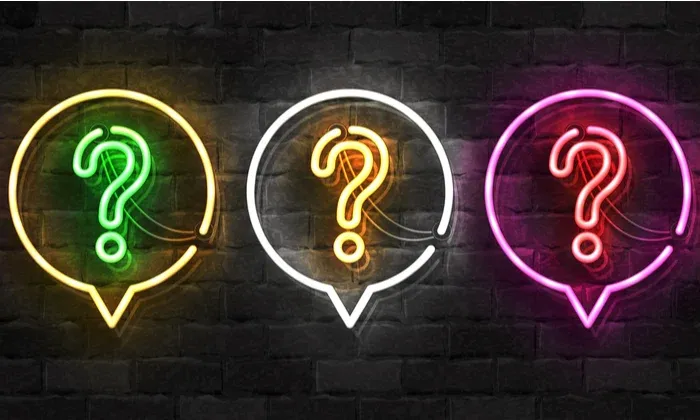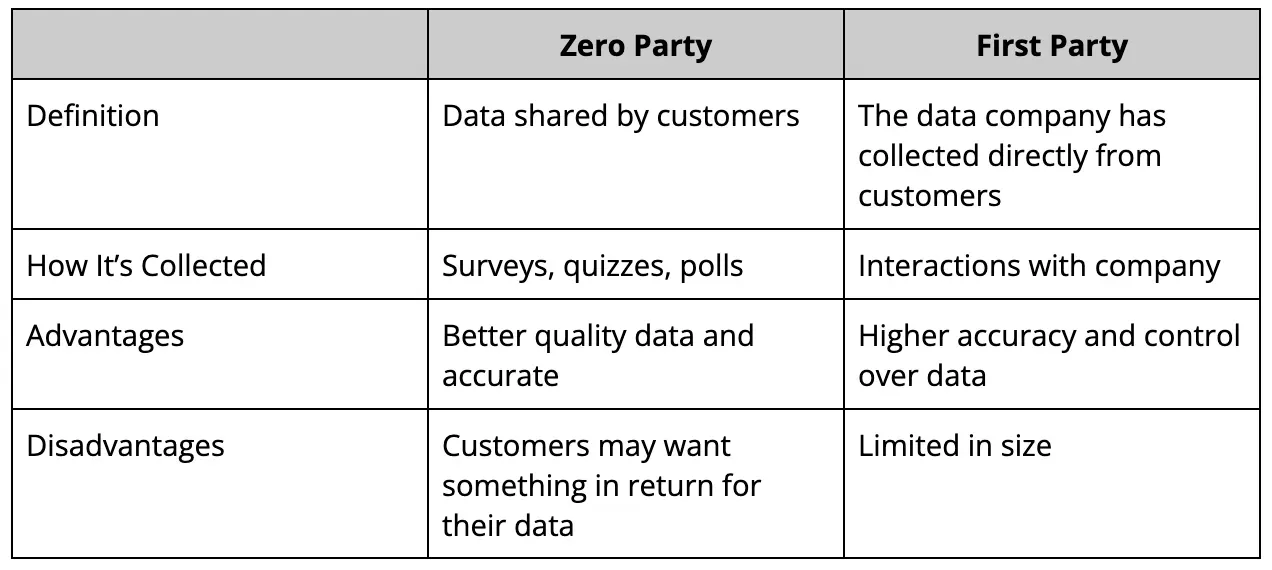
How To Collect Zero Party Data For Your Shopify Store?
How do you collect data on your e-commerce customers?
If the answer is through third-party sources–heads up, major changes are happening.
With stricter data collection and privacy laws, cookies and buying consumer data are becoming a thing of the past.
And suppose you want your Shopify store to deliver on personalization and meet the modern consumer's demands. In that case, you need to shift towards ethical data collection for your marketing campaigns.
There’s only one problem.
It’s not always easy to convince consumers to sit down and give you five minutes of their time.
…Or is it?
With the right strategies in place (more on this below), you can incentivize zero data collection while increasing brand loyalty at the same time.
What Is Zero Party Data?
Zero party data is any type of data that is willingly given by your customers, making it highly valuable and accurate.
Instead of relying on traditional third-party data (which is usually collected without direct consent), your customers consciously and proactively share information about their preferences and expectations.
It gets rid of any guesswork, helping you to fine-tune your customer experience and create targeted marketing campaigns to capture the attention of your best customers.
But the biggest benefit?
By switching to a zero-data approach, you’re setting your Shopify store up for long-term success.
Here’s how.
Why Shopify Stores Need To Adopt Zero Party Data Collection
By 2024, Gartner predicts 75% of the global population will have its personal data covered under privacy regulations.
With Google phasing out third-party cookies, Apple’s privacy policy updates, and tighter privacy legislation around collecting and using personal data, zero party data can help your business adapt while fostering trust and transparency with your audience.
But the call for more ethical data practices isn’t only a safeguard.
It’s a lucrative opportunity.
-
Personalization: Superior data quality means better personalization and segmentation. You’ll have the information you need (straight from your customers) to craft tailor-made experiences that convert. Adding a personal touch can reduce your customer acquisition costs by 50% and lift revenues by 5% to 15%.
-
Transparency: When you ask your audience to fill out a post-purchase survey, your customers know it’s being used for data collection to enhance their experience. This transparency goes a long way in establishing brand trust, with over 90% of consumers saying it affects their purchasing decisions.
-
Trust: Once a customer trusts you, purchasing from your brand becomes a no-brainer. They know your product will work, leading to repeat purchases and a long-lasting relationship. And 81% of consumers say brand trust is a deal breaker in buying decisions.
That’s not all.
Your business owns the zero party data. It gives you greater control, streamlines data management, and reinforces your commitment to transparency and data security.
At-a-Glance: Zero Party Data vs First Party Data

How To Collect Zero Party Data for Your Shopify Store
Collecting zero party data is easier than you think.
All you need is the right set of questions and incentives to get the information you need from your customers.
Below, you’ll find some of the best strategies to gather zero party data, but you need to keep one thing in mind.
When setting up these tools, make sure you’re asking questions that’ll help you sell your products.
For example, if you’re selling cruelty-free make-up, ask something like:
“What is your favorite place to shop for natural beauty brands?”
And avoid inconsequential questions like:
“Do you like Taco Bell?”
Create Post-Purchase Surveys for Your Shopify Store
If there’s one zero party data strategy you need, it’s a post-purchase survey.
Why?
It gives you the ability to capitalize on your customer’s recent engagement with your brand.
Ask targeted questions about their preferences, interests, and habits to improve their shopping experience and gather valuable insights for your brand like:
- How did you hear about us?
- How important is fast shipping to you?
- What other brands did you consider before purchasing from us?
- Who is this purchase for?
These questions give you candid feedback while the interaction with your brand is fresh in their minds.
AKA the “golden hour” of post-purchase engagement.
…But what if no one is filling out your surveys?
That’s where the power of loyalty incentives comes into play.
Reward your customers for their time with perks like cashback or store credit.
It shows that you genuinely value their input, and it becomes a two-way, mutually beneficial transaction.
Sprinkle Quizzes and Polls Throughout The Customer Journey
Do not underestimate the power of interactive marketing.
Unlike a static Instagram post, interactive content requires participation from your audience.
That’s where the magic lies.
All of a sudden, it’s no longer a passive experience. Your customer is involved, which makes a more memorable and immersive experience.
And it’s a fun way for you to collect valuable zero party data from your audience.
Wherever you can sprinkle quizzes and polls throughout the customer journey.
For example:
- Create a quiz for first-time website visitors with credit to apply to their order.
- Create a post-purchase poll with a perk to entice the person to return.
- Ask your customers to vote on an upcoming product release.
With each one, you’re enticing potential customers to complete a sale, rewarding purchasing behavior, and developing brand affinity by involving customers in brand decisions while testing product market fit.
That’s not all.
When used at the beginning of the customer journey, you’re not only collecting data on personal preferences. You’re also collecting an email and/or cellphone number, creating a more interactive newsletter sign-up form.
Incentivize Profile Completions With Valuable Rewards
A creative way to collect zero-party customer data is through incentivizing profile completions.
It’s a win-win scenario.
Your customers get a kickback, and you have all the valuable insights you need to provide a personalized shopping experience.
For example:
- Offer $10 store credit for customers setting their home store and address.
- Offer a free gift for setting their preferences and interests.
It’s a way better strategy than simply rewarding points.
Meaningless points won’t activate your audience. A tangible reward will drive action.
That’s why the key to a successful profile completion strategy is not to keep your incentive a secret. Let your customers know what’s waiting for them and use it to motivate profile completions.
Promote it on the post-purchase page or in an email follow-up to win back customers for a repeat purchase.
Host Online Scavenger Hunts and Giveaways
Want a unique way to collect zero party data?
Host a scavenger hunt and gamify the shopping experience.
It’s a strategy that works well, especially if you have a new collection drop. Offer a free gift or another reward to encourage shoppers to uncover specific information or items in exchange for their data.
It encourages customers to explore your store and engage with your brand in a fun and meaningful way.
For giveaways, the process is simple.
Ask your customers to share their preferences as part of the entry requirements.
Use Preference Centers
You know your dedicated page where you ask customers to manage their communication preferences?
That’s a zero party data gold mine.
These preference centers are easy to set up and allow your customers to set their interests and preferences (as well as change them) without needing to contact support.
Similar to incentivizing profile completions, you can do the same here.
Create a reward activity with TOKI and encourage shoppers to visit the page and fill it out.
Using Zero Party Data To Improve Your Sales and Marketing
Zero party data isn't just a collection of insights. It's your competitive advantage.
Think about it.
The impact of sending an email blast about your new acne product to customers who indicated their biggest skincare concern is breakouts are more powerful than emailing your entire list.
By leveraging this customer-driven intelligence, you're delivering a more personalized shopping experience (which the consumer demands) and future-proofing your business by fostering brand loyalty.
For maximum amplification?
Pair the zero party data you collect via TOKI and integrate it with your current tech stack like Snowflake or Klaviyo. It empowers you to put your customer data to work, target specific segments for your marketing messages, and create lookalike audiences for better-performing paid ads.
Ready to activate your audience? Get started with TOKI for free.